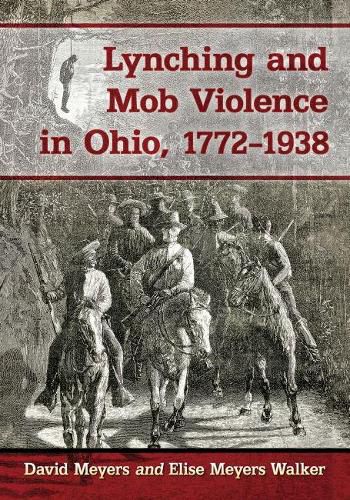Readings Newsletter
Become a Readings Member to make your shopping experience even easier.
Sign in or sign up for free!
You’re not far away from qualifying for FREE standard shipping within Australia
You’ve qualified for FREE standard shipping within Australia
The cart is loading…






This title is printed to order. This book may have been self-published. If so, we cannot guarantee the quality of the content. In the main most books will have gone through the editing process however some may not. We therefore suggest that you be aware of this before ordering this book. If in doubt check either the author or publisher’s details as we are unable to accept any returns unless they are faulty. Please contact us if you have any questions.
During the late nineteenth century, Ohio was reeling from a wave of lynchings and most reasonable people felt something had to be done. But it wasn’t just lynchings, there were organized floggings, tar and featherings, and even large scale riots. They were acts born of anger, frustration, distrust of law enforcement, and, of course, racial and ethnic intolerance.
In 1892, Ohio-born Benjamin Harrison was the first U.S. President to call for an anti-lynching legislation. Four years later, his home state responded with the Smith Act - an Act for the Suppression of Mob Violence. It was a major step forward and the most severe anti-lynching law in the country, but it did nothing to address the underlying causes.
During the period 1771-1938, hundreds of acts of mob violence took place within the bounds of Ohio. Cities burned and innocent people died. Many of these acts were attributed to well-known and respected men-and women-in the community, but few were ever prosecuted. And some were even lauded for taking the law into their own hands.
While times have changed, many hearts have not. This is the first book to take a detailed look at mob violence in Ohio.
$9.00 standard shipping within Australia
FREE standard shipping within Australia for orders over $100.00
Express & International shipping calculated at checkout
This title is printed to order. This book may have been self-published. If so, we cannot guarantee the quality of the content. In the main most books will have gone through the editing process however some may not. We therefore suggest that you be aware of this before ordering this book. If in doubt check either the author or publisher’s details as we are unable to accept any returns unless they are faulty. Please contact us if you have any questions.
During the late nineteenth century, Ohio was reeling from a wave of lynchings and most reasonable people felt something had to be done. But it wasn’t just lynchings, there were organized floggings, tar and featherings, and even large scale riots. They were acts born of anger, frustration, distrust of law enforcement, and, of course, racial and ethnic intolerance.
In 1892, Ohio-born Benjamin Harrison was the first U.S. President to call for an anti-lynching legislation. Four years later, his home state responded with the Smith Act - an Act for the Suppression of Mob Violence. It was a major step forward and the most severe anti-lynching law in the country, but it did nothing to address the underlying causes.
During the period 1771-1938, hundreds of acts of mob violence took place within the bounds of Ohio. Cities burned and innocent people died. Many of these acts were attributed to well-known and respected men-and women-in the community, but few were ever prosecuted. And some were even lauded for taking the law into their own hands.
While times have changed, many hearts have not. This is the first book to take a detailed look at mob violence in Ohio.